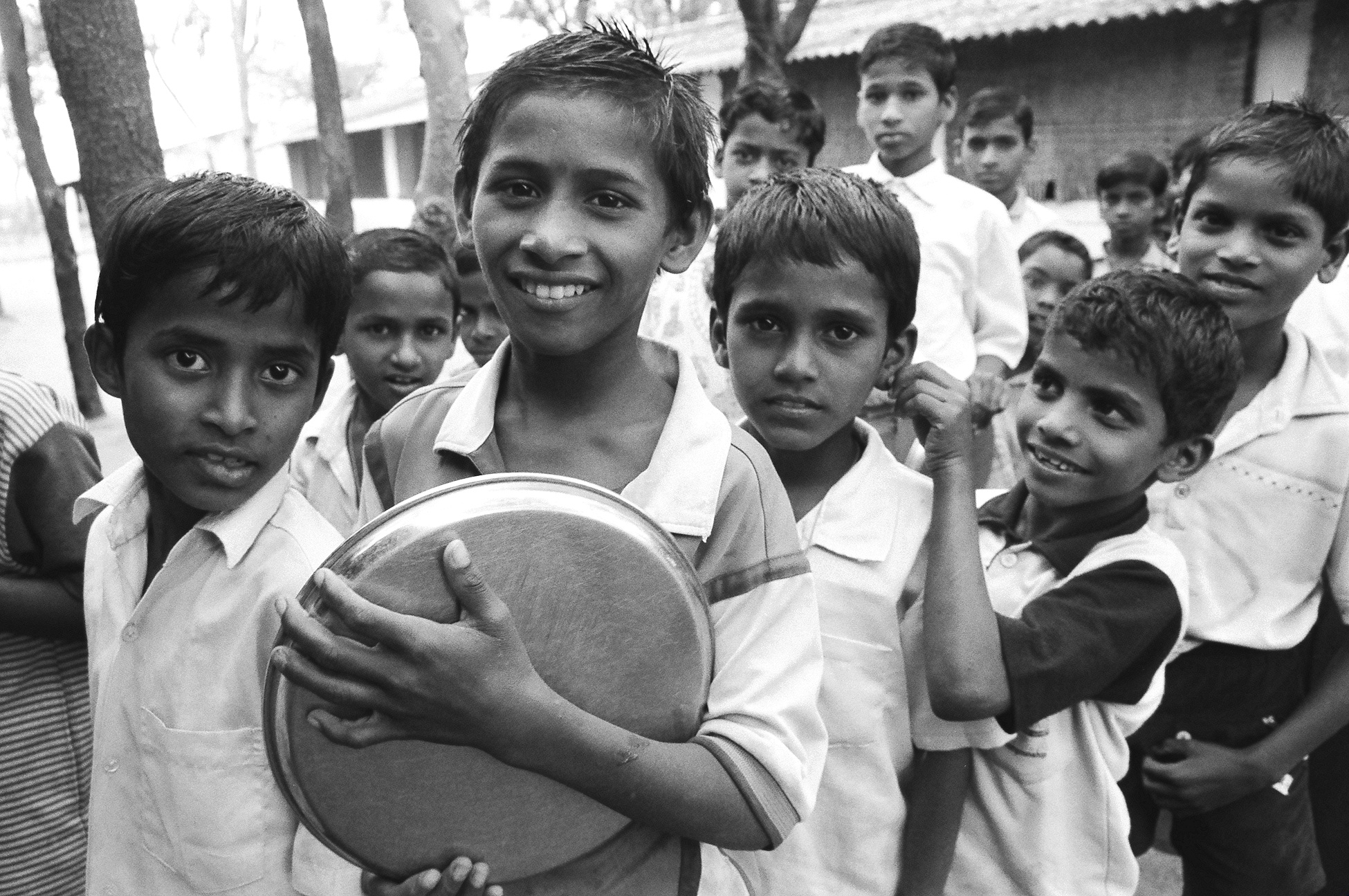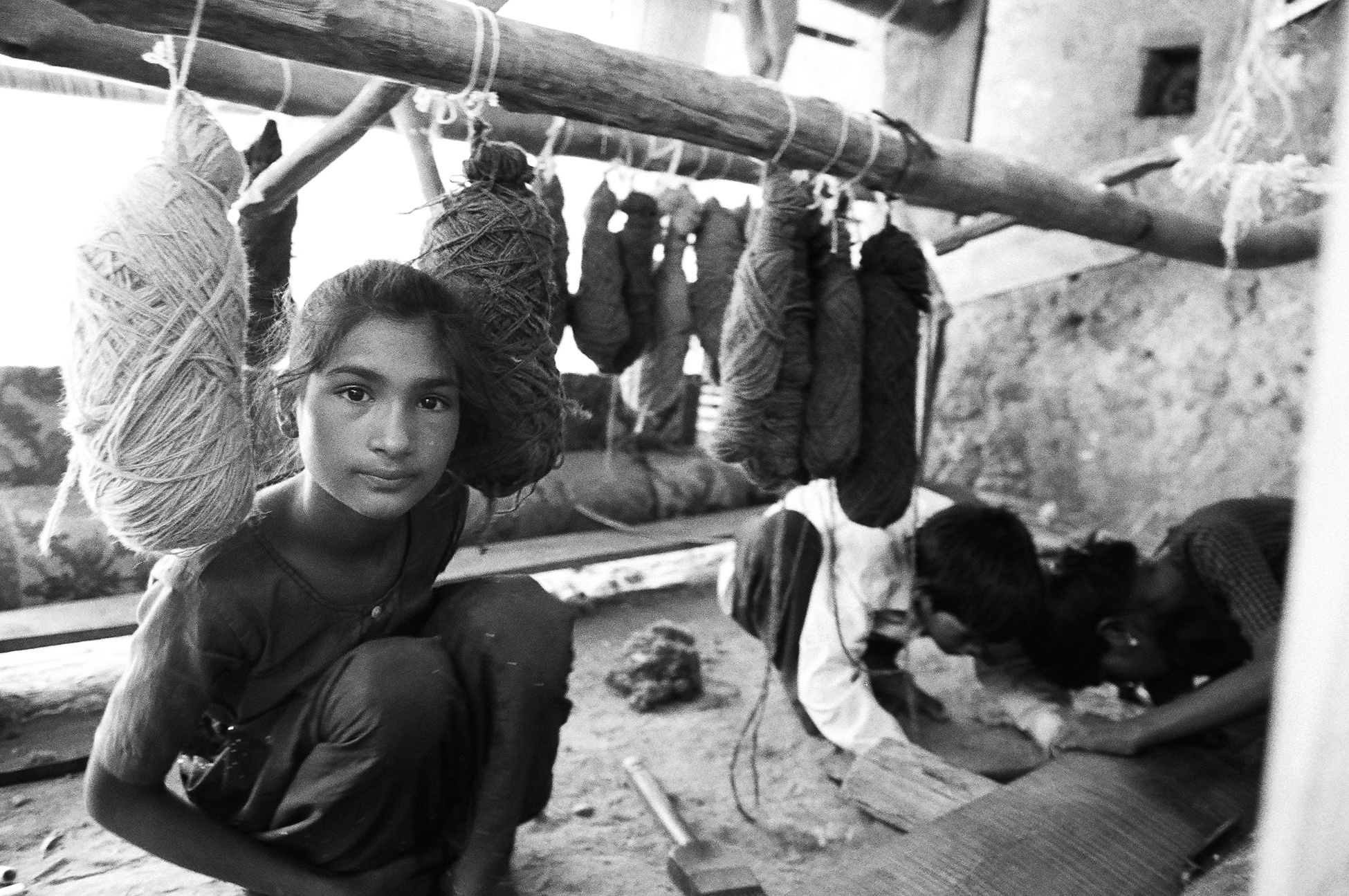The Freedom of a Child Posted by Rachael on Jan 6, 2018 in Hindi Language, Uncategorized
Child labor (बाल मजदूरी/baal majdoori, fem. or बाल श्रम/baal shram, masc.) in India is a pervasive problem with a long history. In more recent times, this issue has come into sharper focus as developed nations have enacted stricter laws (कानून/kaanoon, masc.) against child labor, which often entail mandatory education (शिक्षा/shikshaa, fem.) up to a certain point. Through a combination of education, awareness and legislation, child labor has gradually become a cultural taboo in such nations. Thankfully, India has made progress recently in decreasing the number of child laborers, although it is difficult to know exactly how much of a reduction has occurred as statistics on this issue are rendered unreliable by the Indian government’s subpar reporting practices and a general laxity regarding child workers. Unfortunately, sufficient progress has not yet been achieved on this issue as Unicef reports that “India has more child laborers than any other country in the world” (Yardley).
In more promising news, India passed a 2009 law that guarantees free, compulsory (आवश्यक/aavashyak or ज़रूरी/zaroori) primary education for all children and, in 2012, banned the practice of child labor for those under the age of 14. However, in 2015, this ban was undone to a great extent by a loophole that allows children under 14 to work in “family enterprises” (a vague phrase that can be used to describe anything from a family-owned dry goods shop to slave or bonded labor). The rationale for the enactment of this loophole was that poor (ग़रीब/gareeb) families heavily rely on the money such children earn and that these children acquire essential job skills in the course of their work. Another complicating factor is that the rise in India’s middle classes has been the catalyst for a surging demand for child labor, as even lower middle class families expect to have at least one servant (नौकर/naukar, masc.) and children are seen as desirable for such work as they are more malleable and can be paid less than adults, if anything.
These assertions by the government in support of child labor, however, are baldly refuted by a vast amount of research that states that such children become trapped in an endless cycle of debt (कर्ज/karj, masc. or उधार/udhaar, masc.) and low-wage, relatively unskilled jobs, making it impossible for them to escape crushing poverty (ग़रीबी/gareebee, fem.). Additionally, the International Labor Organization estimates that “economies reap a sevenfold return on every dollar spent on eradicating child labor and investing in education and child social services,” which have the ability to turn unskilled, poor and exploited (शोषित/shoshit, exploitation: शोषण/shoshan, masc.) child laborers into well-educated, flourishing adults capable of escaping the generational cycle of poverty through higher-wage, skilled employment (Editorial Board).
Yet, in developing nations, such as India, the cultural taboo against child labor that we now take for granted in the United States is fragile as the perceived necessity (ज़रूरत/zaroorat, fem.) and even the normalcy (मामूली/maamooli or सामान्य/saamaanya) of seeing child workers in small-scale industries such as restaurants, on farms and in private homes as nannies or all-purpose domestic help is in evidence. For poor, underprivileged families in India, especially those who have too many children to support as it is, it seems inevitable that at least some of their children will cut their education short in order to earn (पैसे कमाना/paise kamaanaa) money to send back to their families.
Although the practice of child labor used to be somewhat commonplace the world over (think the vast scale of child labor employed during the Industrial Revolution in factories of all kinds), the increasing stigma against children working rather than obtaining an education has had the effect of proscribing this practice in more developed countries where such labor is not deemed essential or desirable. But in developing nations where relatively unskilled, manual labor is still in high demand (माँग/maang, fem.), entire families who are uneducated (अशिक्षित/ashikshit or अनपढ़/anpar=illiterate) and poor may find it necessary to hire themselves out to construction companies engaged in dangerous (ख़तरनाक/khatarnaak), unregulated building projects, to name just one industry.
Unsurprisingly, this subject (विषय/vishay, masc.) has been taken up by filmmakers and writers, among others, as particularly poignant and in need of redressal. One such film that tackles this subject deftly and with immense sympathy (हमदर्दी/humdardi, fem.) is Mira Nair’s Salaam Bombay (1988), which details the experiences (अनुभव/anubhav, masc.) and travails of a young boy, Krishna, from a rural area whose mother abandons him at a local circus, forcing him to travel to the nearest big city (Mumbai/Bombay) in order to seek work as a tea boy who delivers and sells tea to customers. In the midst of his new, working life, the protagonist makes friends with other young boys who live on the streets and work odd jobs in order to support themselves and becomes enamored with a young girl whose mother lives and works in one of the Red Light Districts of Bombay.
As mentioned previously, depictions of this issue also abound in literature. Below, I’ve translated a poem by the Pakistani poet Parveen Shakir, to whom last week’s blog is dedicated (read it here). In this poem (कविता/kavitaa, fem. or शायरी/shaayari, fem.), she conveys with subtlety and sympathy the most painful and evocative symbol of a child worker: hands that are worn and calloused, which stand in stark contrast to the youthfulness (जवानी/javaani, fem.) of the child’s face. Notice how, in this poem, Shakir is careful not to mention the gender of the child about whom she writes, which seems to suggest that the child’s gender is immaterial. Rather, what matters is the youthfulness of the child in contrast to his or her aged hands, suggesting the harsh (कठिन/kathin or कड़ा/karaa) manual labor that the child must perform each day in order to earn a living.
“A Difficult Question” (एक मुश्किल सवाल)
ایک مشکل سوال
| Urdu Text |
English Translation and Transliteration |
Hindi Text |
| ٹاٹ کے پردوں کے پیچے سے | From behind curtains of sackcloth, | टाट के परदे के पिछे से |
| ایک بارہ تیرہ سالہ چہرہ جھانکا | A twelve or thirteen year old face peeked out | एक बारह-तेरह साले चेहरा झांका |
| وہ چہرہ | That face | वह चेहरा |
| بہار کے پہلے پھول کی طرح تازہ تھا | Was as fresh as the first flower of spring | बहार के पहले फूल की तरह ताज़ा था |
| اور آنکھیں | And those eyes | और आँखें |
| پہلی محبت کی طرح شفاٴف | Were as clear as first love’s gaze | पहली मुहब्बत की तरह शफ़्फ़ाफ़ |
| لیکن اس کے ہاتھ میں | But, in those hands | लेकिन, उस के हाथ में |
| ترکاری کا ٹتے رہنے کی لکیریں تھیں | Were the lines that come from constantly chopping vegetables | तरकारी काटते रहने की लकीरें थीं |
| اور ان لکیروں میں | And, in those lines, | और उस लकीरों में |
| برتن مانجھنے والی راکھ جمی تھی | Were hardened the ashes that scour utensils | बरतन मांझने वाली राख जमी थी |
| اس کے ہاتھ | Those hands | उस के हाथ |
| اس کے چہرے سے بیس سال بڑے تھے | Were 20 years older than that face | उस के चेहरे से बीस साल बड़े थे |
Facts for this blog have been gleaned from the following articles:
- “Ending Child Labor in India” by the Editorial Board (June 26, 2015)
- “Maid’s Cries Cast Light on Child Labor in India” by Jim Yardley (April 4, 2012)
- “Children Toil in India’s Mines, Despite Legal Ban” by Gardiner Harris (February 25, 2013)
- “Why Do So Many Indian Children Go Missing?” by Sonia Faleiro (November 19, 2017)

Build vocabulary, practice pronunciation, and more with Transparent Language Online. Available anytime, anywhere, on any device.






